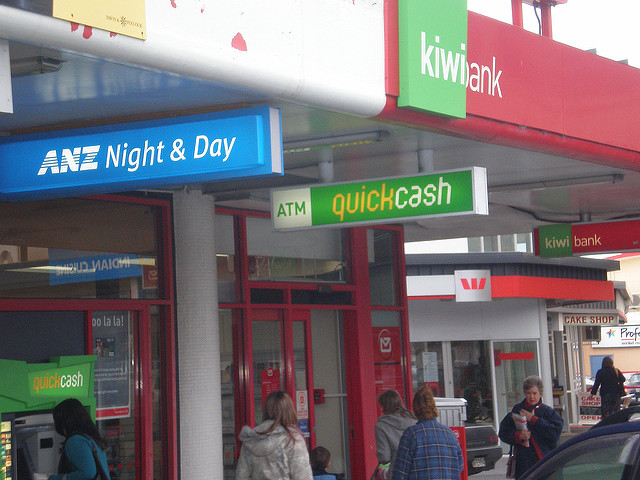Like this article? rabble is reader-supported journalism. Chip in to keep stories like these coming.
Kiwibank rolled into New Zealand in 2002 following a relentless campaign spearheaded by then deputy prime minister Jim Anderton.
Promoted as a “bank for the people,” its impressive marketing campaign appealed to New Zealanders’ sense of nationhood, and has since translated into the bank’s popularity as an alternative to the foreign-owned (mainly Australian) banks that dominate the market.
Similar to arguments supporting a Canadian postal bank, Anderton’s proposal for Kiwibank outlined banking access problems for rural communities, as well as the benefits of a postal bank for the national post service. Just like Canada Post, New Zealand Post — a wholly state-owned enterprise — was (and continues to) struggle with the erosion of its traditional services like mail distribution. Only last year, New Zealand Post cut its standard street delivery to three days a week, down from six — resulting in about 400 postie job losses.
And while the business case proposed by New Zealand Post — which supported having a government-owned bank run out of its outlets — was opposed by some elements of New Zealand’s political class, Kiwibank has flourished in its operations. Within its first year, it had 297 branches around the country, compared with 819 branches for all other banks combined. It had also signed up 150,000 customers in that time, well on track for its initial three-year target of 165,000. More recent figures show the bank now has more than 800,000 customers — an impressive feat in an island nation of just over four million. Importantly, it is a popular player in the retail banking market, consistently voted as best customer service bank in the country — fulfilling promises made by Anderton and New Zealand Post to introduce a bank for “everyday” Kiwis.
From the government’s perspective, investment in Kiwibank has also paid off. The bank received an initial investment of $80 million ($72.2 million in capital from the government directly, $6 million in deferred dividends, $1.2 million from New Zealand Post), followed by two booster injections amounting to a $40-million equity investment from New Zealand Post over 2003 and 2004. In 2005, it turned its first profit, and then last March, the bank paid an inaugural dividend of $21 million — equivalent to nearly 30 per cent of the bank’s after-tax profit for the second half of 2014. In keeping with its strong financial performance, the bank posted a profit of $127 million in the 2014/15 financial year — its fourth consecutive record annual profit. In comparison, New Zealand Post’s profit for the period was $143 million.
Compared to New Zealand, Canada’s banking industry and postal service is immensely larger and more complex — however, parallels can be drawn between the problems around access to banking in rural communities and steadily decreasing postal service in both countries. The sheer size of Canada means problems in servicing rural communities are far more amplified, with lack of access to Internet making it particularly difficult. A Globe and Mail investigation into payday lenders in communities across Canada also illustrates why better financial services are needed for the country’s most vulnerable citizens.
Mike Palecek, president of the Canada Postal Workers’ Union, expands on the case for a Canada postal banking system, dubbing it a “win-win situation” for everyone.
“It’s a way to bring in revenue to Canada Post [and] keep the post office viable, while at the same time continuing the services it’s meant to provide and establishing new services.”
His union, which represents more than 51,000 workers, has been campaigning for a postal banking system for two years.
“We know we have rural communities across this country that the big banks have abandoned and pulled out of. There are now hundreds and hundreds of small communities across the country that don’t have a single bank branch, but they do have a post office,” he says.
Vulnerable residents living in urban areas with high numbers of loan sharks and payday lenders would also have another option if a postal bank — often more inclusive than traditional banks and credit unions — opened at the local post office.
“All of these people would be very well serviced by postal banking,” Palecek says.
See more about CUPW’s campaign for postal banking here.
Teuila Fuatai is a recent transplant to Canada from Auckland, New Zealand. She settled in Toronto in September following a five-month travel stint around the United States. In New Zealand, she worked as a general news reporter for the New Zealand Herald and APNZ News Service for four years after studying accounting, communication and politics at the University of Otago. As a student, she had her own radio show on the local university station and wrote for the student magazine. She is rabble’s labour beat reporter this year.
Photo: Stephen Day/flickr
Like this article? rabble is reader-supported journalism. Chip in to keep stories like these coming.



